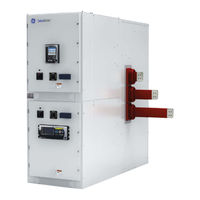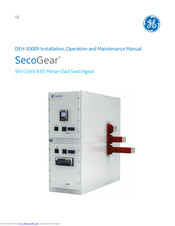User Manuals: GE SecoGear Metal Clad Switchgear
Manuals and User Guides for GE SecoGear Metal Clad Switchgear. We have 3 GE SecoGear Metal Clad Switchgear manuals available for free PDF download: Application Manual, Installation, Operation And Maintenance Manual, User Manual
GE SecoGear Application Manual (76 pages)
5kv - 15kv IEEE metal-clad switchgear
Table of Contents
-
-
-
-
-
Relaying28
-
Other Loads28
-
-
-
-
-
Feeders36
-
Feeder Ties36
-
Bus Ties36
-
Transformers36
-
Generators36
-
-
Motors39
-
Generators39
-
-
-
-
Construction63
-
Hardware63
-
-
Main Bus67
-
Ground Bus69
-
Accessories69
-
Advertisement
GE SecoGear Installation, Operation And Maintenance Manual (56 pages)
5kV-15kV IEEE Metal-Clad Switchgear
Brand: GE
|
Category: Protection Device
|
Size: 4.68 MB
Table of Contents
-
-
-
Interlocks18
-
Lift Truck23
-
-
Wiring27
-
-
-
Racking36
-
Compartment37
-
-
Lubrication47
-
Wire the Cts49
-
Kirk Lock52
-
11 Notes
55
GE SecoGear User Manual (36 pages)
24kV-27kV Air Insulation Switchgear
Table of Contents
-
General
5 -
-
-
Main Busbar34
-
Spare Parts
35
Advertisement
Advertisement


